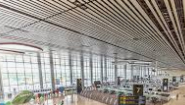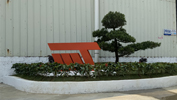Aluminum Cladding: Regulatory and Standards Compliance in Modern Construction
Author:Jayminton Time:2024-07-25

aluminum Cladding has emerged as a preferred choice in contemporary architecture for its aesthetic appeal, durability, and sustainability. However, alongside its benefits, ensuring regulatory compliance and adherence to industry standards is crucial in ensuring safety, performance, and sustainability in building design and construction. This article explores the regulatory landscape and standards that govern aluminum cladding, highlighting their importance and impact on the built environment.
Importance of Regulatory Compliance
Regulatory compliance ensures that aluminum cladding systems meet established safety, performance, and environmental standards. These regulations are designed to safeguard occupants, protect buildings from hazards, and promote sustainable construction practices. Key aspects of regulatory compliance include:
Fire Safety Regulations: Aluminum cladding must comply with fire safety standards to mitigate the risk of fire spread. Regulations often specify requirements for fire resistance, flame spread, smoke production, and combustibility of cladding materials.
Building Codes: National and international building codes prescribe guidelines for the design, installation, and performance of cladding systems. These codes ensure structural integrity, durability, and safety throughout the lifecycle of a building.
Environmental Standards: Aluminum cladding manufacturers and designers are increasingly focused on environmental sustainability. Compliance with environmental standards involves using recycled materials, reducing energy consumption during production, and minimizing environmental impact during installation and maintenance.
Health and Safety Regulations: Occupational health and safety regulations govern the handling, installation, and maintenance of aluminum cladding to ensure worker safety. Compliance includes proper training, use of personal protective equipment (PPE), and adherence to safe work practices.
Standards Governing Aluminum Cladding
Several standards organizations and regulatory bodies establish guidelines and specifications for aluminum cladding:
ASTM International: ASTM standards cover various aspects of aluminum cladding, including material properties, mechanical testing, corrosion resistance, and coating systems.
International Code Council (ICC): The International Building Code (IBC) and International Fire Code (IFC) published by ICC include provisions for exterior Wall Cladding, addressing fire safety, weather resistance, and installation requirements.
European Committee for Standardization (CEN): CEN standards, such as EN 13501 series, classify the fire performance of construction products and specify test methods for determining fire resistance of cladding materials.
National Standards: Each country may have national standards and regulations governing the use of aluminum cladding, tailored to local climate conditions, building practices, and safety requirements.
Compliance Challenges and Solutions
Ensuring compliance with regulatory requirements can pose challenges for architects, designers, contractors, and manufacturers:
Complexity of Standards: Navigating multiple and evolving standards across different jurisdictions requires expertise and understanding of regulatory nuances.
Material Selection: Choosing compliant cladding materials that meet both aesthetic and performance requirements while adhering to regulations can be challenging.
Testing and Certification: Cladding systems must undergo rigorous testing and certification processes to demonstrate compliance with fire safety, structural integrity, and environmental standards.
Continuous Monitoring and Updates: Regulatory requirements and standards evolve over time, necessitating ongoing monitoring and updates to ensure continued compliance throughout the lifecycle of a building.
Conclusion
Aluminum cladding offers architects and designers a versatile and sustainable solution for enhancing building aesthetics and performance. However, achieving regulatory compliance is essential to mitigate risks, ensure safety, and uphold quality standards in construction. By adhering to fire safety regulations, building codes, environmental standards, and health and safety guidelines, stakeholders can harness the full potential of aluminum cladding while contributing to safe, resilient, and sustainable built environments. As the industry evolves, ongoing collaboration among regulators, industry professionals, and manufacturers will drive innovation and best practices in aluminum cladding design and compliance.

 S1 Clip-in Metal ceiling System
S1 Clip-in Metal ceiling System JMT-L4.2 U-Baffle System
JMT-L4.2 U-Baffle System JMT Aluminum Wall Cladding
JMT Aluminum Wall Cladding Aluminum Honeycomb Panel
Aluminum Honeycomb Panel Air-Condenser Cover
Air-Condenser Cover Metal Heat Cover
Metal Heat Cover Singapore Changi Airport T2 Arrival
Singapore Changi Airport T2 Arrival Australia Marvrl Stadium City Edge
Australia Marvrl Stadium City Edge Enterprise Information Announcement
Enterprise Information Announcement Construction Industry Solutions
Construction Industry Solutions About Jayminton
About Jayminton Contact US
Contact US